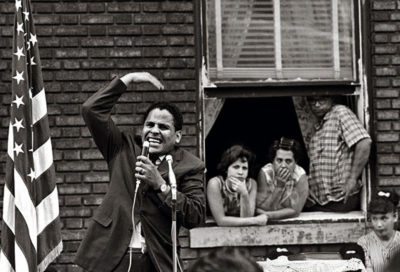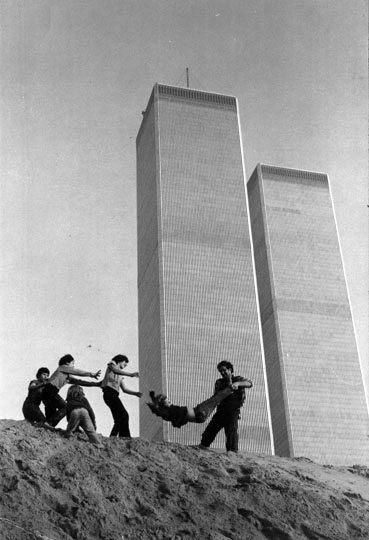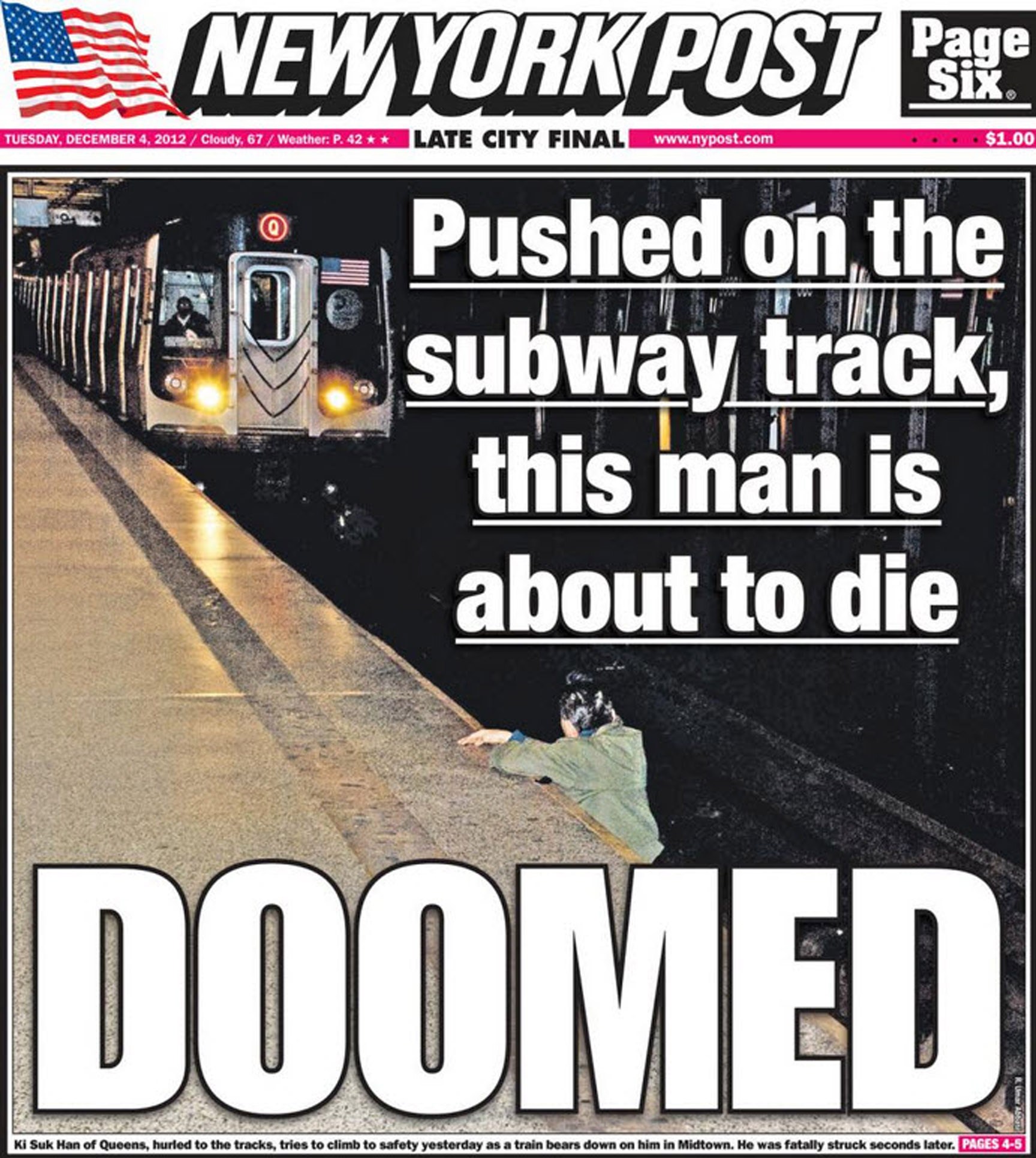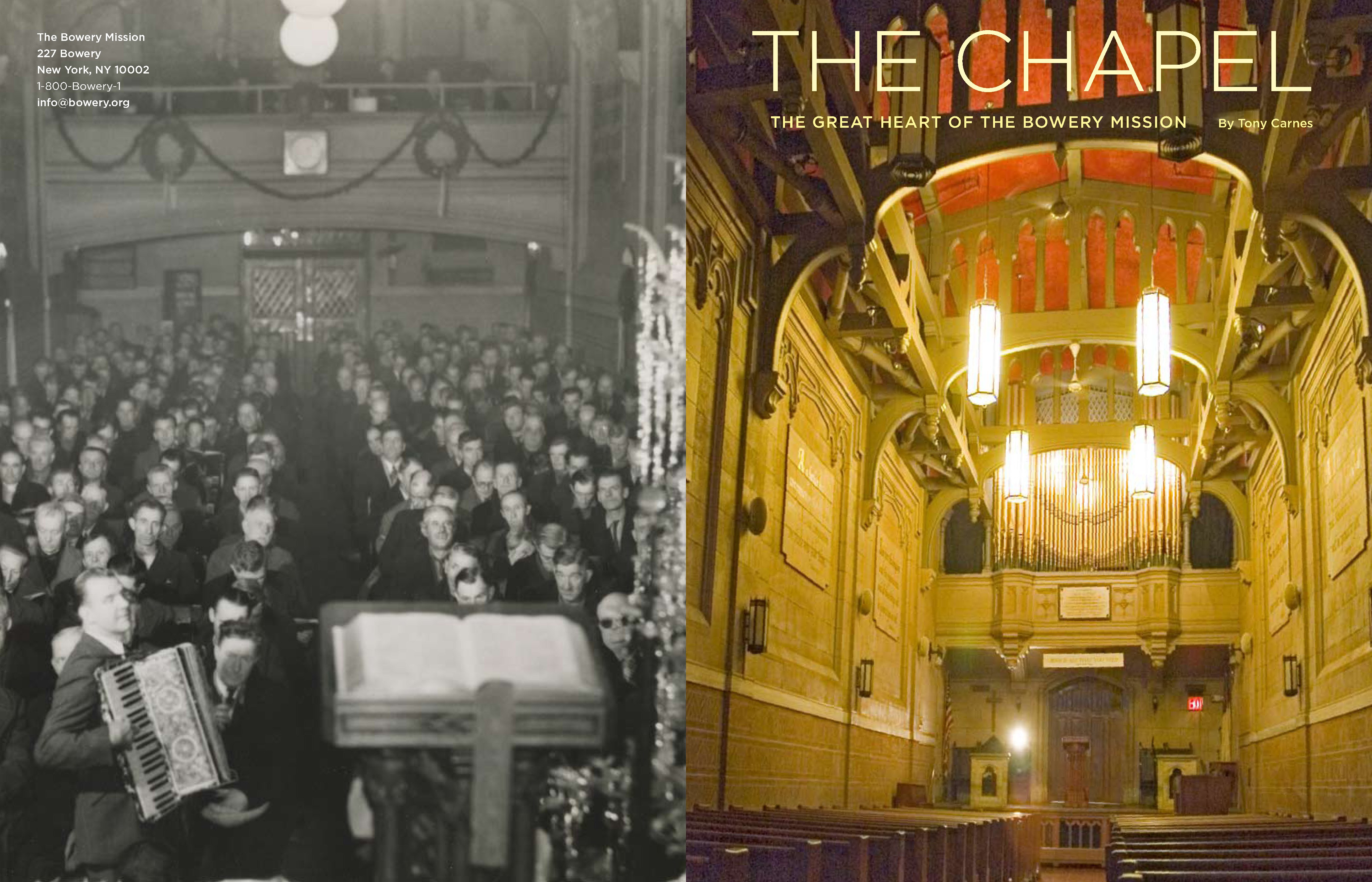
The contemplative spirit in city news
Some photos, some headlines, and some stories just stop you in your tracks. You register their impact and then rock back to try to comprehend what you see or hear. Sometimes, the news elevates us into a spiritual contemplation.
Certainly, the visuals and audios from the World Trade Center disaster were stunning. They are still stunning. By now they regularly push many people to a contemplation about life, its purposes, and meanings.
This event was an instance in which the news was so intrusive that the designer of religion news reports should just get out of the way in favor of the unmediated experience. The news judgments, discretions, and emphases can come later.

The Trade Tower’s Boys by Alan Kleinberg/A Journey through NYC religions
After the catastrophe, some started to piece together our understanding by looking at the past and the present. Looking at the iconic photo (above) of kids playing on the sand dunes around the World Trade Center while it was being constructed may provoke a kind of nostalgia in one’s heart that can deepen into a tragic consciousness. There may be a yearning and mourning for more innocent times, then a rage over its destruction or a hopefulness for a restoration of joy and peace. The viewer is arrested into a mood, then a series of moods. A photo is iconic because it can stop the eyes motionless and move one through a whole range of feelings and thoughts.
Another type of photo was taken at a cruel murder on Monday, December 5, 2012. It showed the moment just before Ki-Suk Han, 58, was killed on the Q subway tracks. He was shoved there by a homeless person after a confrontation in the station at 49th St. and Seventh Avenue in Manhattan.
Han, of Elmhurst, Queens, desperately tried to scramble back to the platform as onlookers screamed and ran in fear. The subway trough became a kill box. A photographer for the New York Post was there and took the photo. The headline was “Pushed on the subway track, this man is about to die DOOMED.” A debate firestormed through the media about the appropriateness of the Post’s coverage and the response of its freelance photographer R. Umar Abbasi.

This is the type of photo which causes us to identify with the victim. The situation touches that core fear of being helpless, doomed. We can so easily imagine his feeling and grieve over the hurt to his family. The photo is too painful to look at, but nonetheless we do.
Some criticized the interest in the photo as horror porn. The Post defended its posting by pointing out that it served the public debate, in which the paper was engaged, over whether we are letting too many people out of prison too soon, or if we need to place more emphasis on treatment and counseling for the homeless. The pusher was a drifter who had committed more crimes than one could count. The photo of Han also wakes us up to recognize the costs of being an immigrant in this city. Two-thirds of New York City is immigrant and their children. Han is us.
One must be wary that a horrible crime committed by a homeless man will incline us to a blanket dismissal of the homeless. Perhaps, we should recall that most homeless people deep down reach out from their brokenness to God as a guarantor of their significance and survival.
Did you know that practically every homeless person in New York City says that they can go forward with life because they know that God loves them? This is what Kimberly Kennard, a PhD student at CUNY, found out in her interviews with the homeless.
Grace: “I put myself in the hands of God.”
Evelyn: Homelessness will bring you closer to what God intended for us, completely unconditionally to love one another. Hopefully, we will learn to love ourselves.”
Anonymous 1: “When I was on the streets, I had faith in God that he would spare my life. I begged him to take me away but he saved my life any way.”
Anonymous 2: “Without my faith, I would not be able to go on. It gives me strength; God blesses me with this strength.”
How do you communicate the faith of the homeless, the great encouragement and values that God gives them, and the nobility of their human helpers? This questions came up during the design of a publication about the homeless.
The main driving force of the early years of The Bowery Mission was Louis Klopsch. We discovered that he wanted a chapel that was like a cathedral for the homeless. How do you catch this sensibility?
One answer is Journey’s idea of a coffee table booklet honoring the homeless and The Bowery Mission. We wanted a visibly bold high-quality look but not a luxury book, which would have conveyed the wrong message. On the cover, a word free photo shows the cathedral for the homeless that is the Great Chapel of the mission. It is golden and sweeping, filling the eye with beauty. The cover and text stock provide the right feel of quality without pretension, and the interior design is as boldly beautiful as a coffee table book. The photos are often timeless and relevant. The text speaks to the heart and its infinite longings. The opening line is “Good hearts are built in families; great hearts are built in tragedies.” All New Yorkers of whatever faith or non-faith can cultivate their heart and mind with this coffee table booklet.

An online religion news media should come back again and again to iconic visuals that move the viewers to contemplation. The city is not just a spectacle, but something more, an archetype of some essential aspect about life in New York City. Mystery, fate and hope lay in the city for all who come.
See the previous feature in this series:
The unconscious influences in the city. The 7 senses of the art of religion news in the digital age, Part 3



Leave a Reply